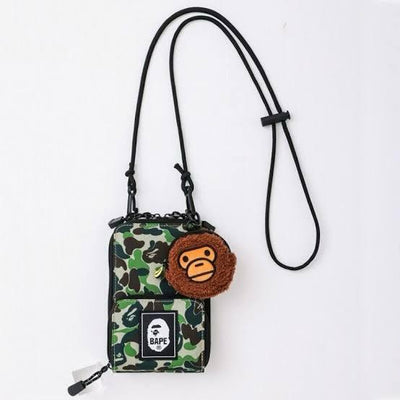9 Tips To Legit Check Your Sneakers
Are You Buying Fake Sneakers?
Tired of fearing life and everything around you? Sneaker shopping got you nervous? Dodge the fakes with Drops 9 step guide to authenticate your sneakers.
Step 1: Check The Source
If you're buying off social media, check the credentials. Make sure their page is fully functioning, that they have likes and normal activity. If they have 1 picture with 2 likes and 17 followers, probably fake.
If you're buying from a website you're unfamiliar with, make sure you can pay with Paypal. Paypal offers great buyer protection to insure that you get what you're ordering. Paypal also has a great security team that is made to sniff out schemers, because when you get scammed, guess who foots the bill? Paypal is in the business of making money, not losing it.

Step 2: Inspect the Packaging
Start by examining the packaging of your item carefully. Packaging and tags are often the most overlooked aspects in replica production, making them your top tools for spotting fakes. Use online resources to compare your box, item stickers, CPU code, fonts, retail tags, and other packaging details. These elements can be the easiest giveaways for counterfeit shoes.
Major brands take their packaging seriously and rarely, if ever, make mistakes. Significant flaws, like incorrect box types or sizes, are strong indicators that the shoe is a replica.
This is particularly important for highly sought-after items like Off-White, Yeezy, or Jordan 1 sneakers. These limited-edition releases are produced in small quantities, and their packaging is consistently precise and uniform.

Step 3: Verify the Inside Tag
The inside tag is one of the easiest ways to identify replica sneakers, as it’s often a major area for mistakes. Start by verifying the UPC code, which should match for every pair of the same size. You can confirm this using the Goat app or by comparing tags with a friend’s authentic pair.
Next, review the production information. Legitimate sneakers adhere to strict manufacturing standards. The tag will show details like the plant code (e.g., XC), production dates, and a uniform production number (bottom left). For large-scale releases, production numbers will be consistent across shoes made in the same plant, though variations may exist between different plants.
The only exception to this rule is a production number reading 99999999, which indicates a sample run used for promotional or testing purposes.

Step 4: Do Your Shoes Smell Off?
This might sound unusual, but the smell test is a surprisingly reliable method. Replica sneakers are often made with lower-quality materials, which gives them a noticeably different scent than authentic pairs.
If your shoes have a strong, unpleasant odor—like a skunky or chemical smell—it’s a red flag. This could mean the materials are counterfeit, or perhaps the shoes have been handled in less-than-ideal conditions. Either way, avoid purchasing them.
Additionally, watch out for signs of previous wear, such as the smell of used shoes. Even if the odor fades, issues like hygiene or potential athlete’s foot might not. Trust your nose—it can save you from a regrettable buy!

Step 5: Do Your Homework
This step is often overlooked but crucial. Don’t rely solely on the opinions of others to verify your sneakers. Take the time to educate yourself. Watch tutorials, familiarize yourself with your current collection, and visit sneaker shops to gain hands-on experience. Avoid seeking validation from random friends or online groups.
Too often, people in forums or on social media shout "fake," "FUFU," or "reps" without providing any real evidence. If someone can’t explain their reasoning, their opinion isn’t worth trusting.
For a definitive answer, take your shoes to a consignment shop and express interest in selling them. Don’t mention any doubts about their authenticity—let the professionals do the work. Consignment shops won’t purchase fake sneakers, so you can sit back and enjoy a free legit check.

Step 6: Compare and Contrast
If you have access to the same model of the shoe you’re planning to buy, use it as a reference point. While there may be minor variations, the same model will share enough consistent features to help you identify any discrepancies between the authentic and fake versions.
For example, stitching on a Jordan Retro 1 is typically uniform across releases unless explicitly noted otherwise. Similarly, Adidas or Yeezy Boost models use consistent foam materials, so they should feel the same as previous versions. Use these details as a blueprint to spot flaws in the pair you’re considering.
Pay close attention to even the smallest details. If possible, bring the authentic shoes with you when making the purchase for a side-by-side comparison.

Step 7: Consider the Price
This one’s straightforward: if the deal seems too good to be true, it probably is. Don’t fool yourself into thinking you’ve stumbled upon the steal of a lifetime. In psychology, this kind of self-deception is called cognitive dissonance—look it up if you’re curious. The bottom line? If the price is suspiciously low, something is likely wrong.
For instance, if someone is offering brand-new Yeezys for $150, it’s a red flag. Deals like that don’t happen unless there’s a catch. Falling for such offers can quickly turn you into the sucker in a scam.
Still think it’s legit? Then let me pitch you a deal: meet me at McDonald’s, and I’ll show you how to turn $500 into $5,000 by tomorrow. All I need is your money, your social security card, and your mother’s maiden name. Don’t fall for it—do the math, trust your instincts, and avoid unrealistic prices.

Step 8: Consider the Production Run
This is particularly relevant for those questioning the authenticity of a general release or a sneaker with a large production run.
Replica manufacturers are savvy—they aim to maximize their profits, so they focus on replicating sneakers that are in high demand. Most fake sneakers are made from moderately popular releases. For example, if Nike drops 1.5 million pairs of Jordan Concords, the chances of many replicas circulating are low.
While it’s not impossible for replicas to exist in large runs, it’s much less likely. Additionally, larger production runs often lead to lower-quality sneakers, as more variables come into play during mass manufacturing. So, don’t stress over every tiny detail—focus on the bigger picture.

Step 9: Does the Shoe Come with a Receipt or Proof of Purchase?
A receipt alone doesn’t guarantee authenticity, as fake receipts are commonly circulated online. However, if the receipt includes the seller’s name, it’s a good sign.
In today’s world, it’s nearly impossible to make a purchase without some form of proof—especially with shoes. Many stores offer reward programs, collect email addresses, and send confirmation emails, creating a digital paper trail. So, when buying from someone, ask if they personally purchased the shoes. If they say yes, request proof of purchase.
If they can’t provide it, it’s a red flag. Don’t waste any more time—move on and head to Dropsau for authentic kicks. Be sure to check out our other blogs and follow us on social media for exclusive deals!
















Leave a comment